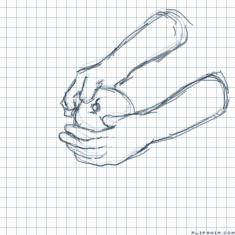bElOw


31 comments

thelaughingpandaxo[OP]
01.03.2018 23:30
LinkThere is a bump on my wrist
I do not know about cancerous lumps but I do know that lumps can come and go with your period cycle. As a matter of fact when I was in my early 20's I felt my first lump and freaked and went to the doctor. He said it was just because I had lumpy breasts and they are very large breasts and have always been very good about self-exams. I have felt lumps and then checked again a week or so later and could not find it. As a matter of fact the one that got me started on the merry go round (by the way it was not cancer) I never felt my doctor felt it during my yearly exam. Then when my surgeon did the exam he could not feel it but of course it showed on the ultrasound. So I do know that lumps in particular can come and go.
Got this from the internet
Swollen glands commonly develop when the body fights infections from colds, insect bites, or small cuts. More serious infections may cause the glands to enlarge and become firm, hard, or tender. Examples of such infections include:
Bacterial infections, such as:
Strep throat, caused by the streptococcus bacterium.
A boil (abscess), similar to a large pimple. A boil may develop when a hair follicle or the skin becomes infected. A sweat gland abscess may form one or more lumps in the armpit that look like boils.
Viral infections, such as:
A viral infection of the skin (molluscum contagiosum), which causes small pearly or flesh-coloured bumps.
Measles, rubella, chickenpox, or mumps.
AIDS (acquired immunodeficiency syndrome), which develops in the late stage of HIV (human immunodeficiency virus) infection. This virus attacks the immune system, making it difficult for the body to fight off infection and some diseases.
Mononucleosis (Epstein-Barr virus) or cytomegalovirus (CMV).
A lipoma, a smooth, rubbery, dome-shaped lump that is easily movable under the skin.
A cyst, a sac of fluid and debris that sometimes hurts.
Cystic lesions from acne are large pimples that occur deep under the skin.
Branchial cleft cysts are found in the neck and do not usually cause problems unless they become infected. These cysts are most common in teenagers.
An epidermal cyst (also called a sebaceous cyst) often appears on the scalp, ears, face, or back.
A ganglion is a soft, rubbery lump (a type of cyst) on the front or back of the wrist.
Tonsillitis, which may also cause swelling in the neck.
A salivary gland problem, such as inflammation, a salivary stone, an infection, or a tumour.
An inflammation of fatty tissue under the skin (erythema nodosum) or overgrown scar tissue (keloid).
Hernias or aneurysms are bulging sections in a muscle or blood vessel. A nodule is usually a growth on a gland. A hernia, aneurysm, or nodule may be felt under the skin but may not be visible. These types of lumps may need more medical evaluation.
An inguinal hernia is a soft lump in the groin or near the navel. It may be more visible when you cough. Hernias that disappear when you press on them may not need any treatment. Hernias that don't disappear when you press on them may be more serious and need medical treatment.
A bulging section in the wall of a blood vessel (aneurysm) may feel like a pulsating lump in the abdomen, in the groin, or behind the knee. It can cause serious problems if it involves the blood vessels in the brain or the abdomen. Aneurysms may be a medical emergency and may require immediate evaluation.
A thyroid nodule is an abnormal growth on the thyroid gland. An enlarged thyroid gland (goiter) is in the neck just below the Adam's apple.
Swelling caused by cancer
A lump caused by cancer is usually hard, irregularly shaped, and firmly fixed under the skin or deep in tissue. Although they usually do not cause pain, some types of cancerous lumps are painful. Most lumps are not caused by cancer.
Other causes
Swelling may also be caused by:
A side effect of a medicine, such as phenytoin (Dilantin).
Other medical conditions and diseases, such as lupus, myalgic encephalomyelitis/chronic fatigue syndrome, or rheumatoid arthritis.
Check your symptoms to decide if and when you should see a doctor.
Skin lumps can be caused by a number of health conditions that range in severity. Common types and causes of skin lumps include:
trauma
acne
moles
warts
pockets of infection, such as abscesses and boils
cancerous growths
cysts
corns
allergic reactions, including hives
swollen lymph nodes
childhood illnesses, like chicken pox







